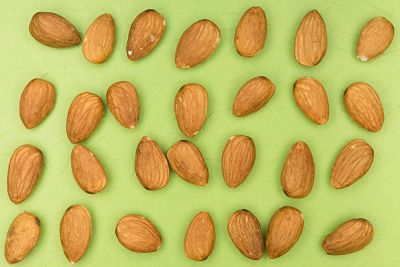Jack Wilson is a Sport and Exercise Scientist at the Porsche Human Performance Centre and specialises in nutrition. Jack has provided a three-step guide on how to make a smart, informed decision when deciding whether a food is healthy or unhealthy when you're next in the supermarket...
We’ve all been there. We see a tasty looking product on the supermarket shelf, we pick it up and then go through the process of trying to work out if it’s healthy or not.
As a nutrition coach, arming someone with an understanding of how to do this effectively is always a massive step towards achieving long-term improvements in their nutritional habits.
At Porsche Human Performance we have a basic 3-step guide on how to make smart, informed decisions on whether a food or drink is ok to go into your basket or best left on the shelf...
Step 1: Appearance of food
The first question to ask yourself is ‘does this food look natural?’
Most nutritionists would agree that the main component of any healthy diet are minimally processed, natural /‘whole’ foods. In a previous blog on why you should eat whole foods instead of processed foods I mentioned that, rather than being placed into distinct categories, all foods should be viewed on a continuum with unprocessed, whole foods at one end and highly processed, un-natural foods at the other.
It’s usually a good idea to opt for foods that look like they fall towards the ‘whole foods’ end as much as possible.
Now this might seem pretty obvious and straight forward in some cases.
But how about this one?

If you were looking at this bar for the first time, it’s impossible to know for sure whether it's particularly healthy or not.
Part of this ambiguity comes from the fact that nowadays food manufacturers play on our growing health-consciousness and often do a great job of making foods with pretty poor nutritional value seem like healthy options.
As a general rule, if a food comes in packaging, especially one with some sort of health claim on it (like those "low fat, gluten-free" gummy bears), that’s often a good reason to question the nutritional value of that product and move on to Step 2...
Step 2: Ingredients list
So what a food looks like can give us an initial clue to whether it's healthy or not. Checking out the ingredients list usually gives us some confirmation.
In truth, most totally natural foods like fresh fruits, vegetables, natural cuts of meat and fish (the sort of foods that should form the majority of our diet!) won’t have ingredients lists.
However for those that do, here are some guidelines which can help distinguish the better options from the worse. Look out for...
- Length – Really long ingredients lists are usually a bad sign, so the shorter the better. Not always, but generally speaking this is true!
- Familiarity – You should be able to recognise most of the ingredients.
- Unwanted additives – Look out for artificial ingredients. These are often the long, unpronounceable words. Also keep an eye out for added sugars! Anything ending in ‘ose’ (e.g. glucose, fructose, maltose, sucrose), any syrups (e.g. corn syrup, rice syrup, malt syrup, maple syrup) and even ‘natural’ sweeteners (like agave nectar, coconut sugar, date sugar, honey and fruit juice concentrates) are all forms of added sugar which should largely be avoided, especially if they fall towards the start of the ingredients list.
- Order – ingredients are listed in weight order from highest to lowest, thus we want foods with whole-food ingredients listed first and less desirable ingredients listed towards the end, if at all.
Step 3: Nutritional Information
Check out these nuts...

It looks natural and there’s a short ingredients list with recognisable, whole food items and no additives. So far so good. But, before you eat the entire bag, check the front of the packaging...
This traffic light system used on many U.K. foods tells us the calorie, total fat, saturated fat, sugar and salt content of what's inside. These are all things that tend to be over-consumed in developed societies.
On the back of the packaging, we can then find the full nutritional info showing quantities of other nutrients including beneficial ones like protein and fibre...
| Typical Values | 100g contains | 25g contains |
|---|---|---|
| Energy | 2716kJ (657kcal) | 679kJ (164kcal) |
| Fat | 59.2g | 14.8g |
| Saturates | 9.6g | 2.4g |
| Carbohydrate | 9.8g | 2.5g |
| Sugars | 4.6g | 1.2g |
| Fibre | 6.7g | 1.7g |
| Protein | 18.0g | 4.5g |
| Salt | 0.1g | 0.1g |
When looking at the nutritional information, always be sure to check the corresponding serving size. Too often we see people proudly remark that their lunch contains just 380 calories, only to then realise this number is for half the pack they’ve just consumed.
In the case of our bag of mixed nuts, the suggested serving size is 25g, or one eighth of the bag. Eating the whole bag over the course of day would equate to a whopping 1312 calories, pretty hefty for what was probably just a snack!
I'm not saying you should never eat foods that are high in calories, fat or sugar. Far from it. Rather, if a food looks good after Step 2 but has reds and oranges in the nutritional information, just be careful with your portion sizes.
A quick word on drinks
Our 3-step guide works exactly the same for drinks. The only exceptions are alcoholic drinks which don’t tend to have ingredients lists or nutritional information displayed on their packaging. For this you’ll have to look up specific brands online or visit sites like drinkaware.co.uk. I also wrote a piece on what to drink when you’re not sweating, which might come in handy.
Use this guide next time you're unsure whether to put something into your shopping trolley and hopefully you’ll make the right choice!
If you feel you’d like to come on board for some nutrition coaching with us at PHP you can contact us at php@porsche.co.uk or on 01327 855074. Prices start from £95 and we have great experience working with all types of athletes and non-athletes alike. Plus, we’re a Precision Fuel & Hydration Sweat Test Center, so we understand fully how your hydration plan best fits in with your wider nutrition strategy.
